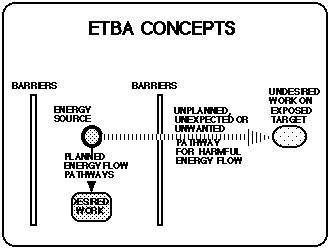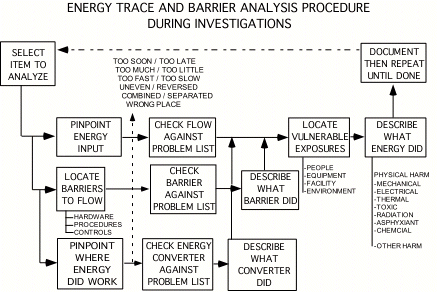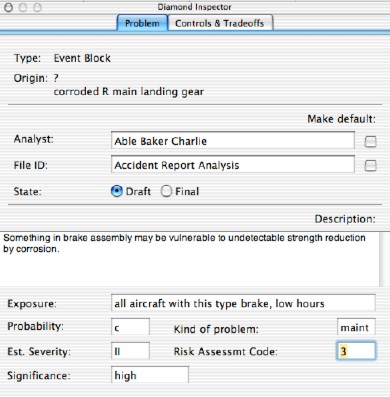Recommendation Developmen Tutorial
© 2004 by Starline Software Ltd.
|
|
INVESTIGATION CATALYST Recommendation Developmen Tutorial © 2004 by Starline Software Ltd. |
|
CANDIDATES FOR ACTION
Analyze the Matrix entries to discover and define problems disclosed by the process. |
|
General Approach |
This approach works when searching for risk-raisers or hazards or problems or needs or opportunities for improvement, during predictive analyses or analyses of current operations or past incidents. For convenience, the term "problem" is used for all these terms. The general approach for finding candidate opportunities for improving future performance (problems, hazards or needs) is to use the Matrix displays to examine one linked event pair or set
at a time, until all EBs on the Matrix displays have been studied. The Overlap View allows analysts to study the interactions among overlapping events for possible problems attributable to such overlaps. |
Energy Trace and Barrier Analysis |
Energy produces work. Work is required to produces changes during a process. One useful strategy for finding problems is to trace the energies that did the work during the process. The thinking behind this strategy is that energies are controlled during processes by barriers which direct energy flows to where they will do the desired work. When barriers do not achieve this, undesired work may follow. Thus the approach is to look for what energy did in the EB pairs or sets and links. This illustrates the thinking.

The complete ETBA process is shown below.  Start the ETBA with any energy inputs into the process described on the Matrix, and mentally trace the energy through the process, either as it flows through the process or to where it is converted into work, or into another form of energy. Don't overlook people as energy sources that do work in some cases: physical actions require energy inputs by people. Examining the "barriers" that direct people energies can often be illuminating. The reference below provides a comprehensive list of energies that might be helpful. For more information about this analysis method, click here. |
Compare with expectations |
For incident investigations, ask a series of questions to identify undesired actions or relationships compared to expectations:  Deviations from expectations suggest a problem - either with what happened, or the expectations. "Can this event or relationship indicate a need for a change, and if so, why?" The answer to each question may suggest a problem event or relationship, |
| Use MOTEL |
M O T E L acronym can help you search for problems with the interactions in terms of their
|
Problem Statements |
When adding a Diamond, you can record a problem in the Diamond panel, restating it in terms of what needs to get done to eliminate or control it. The wording of your problem statement has the effect of establishing the objective for any subsequent action.  |